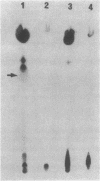Abstract
The cell surface hydrophobicity of Serratia marcescens appears to be an important factor in its adhesion to and colonization of various interfaces. The cell surface components responsible for mediating the hydrophobicity of S. marcescens have not been completely elucidated, but may include prodigiosin and other factors. In the present report we have investigated the potential role of serratamolide, an amphipathic aminolipid present on the surfaces of certain S. marcescens strains, in modulating cell surface hydrophobicity. The hydrophobic properties of a serratamolide-producing strain (NS 38) were compared with those of a serratamolide-deficient mutant (NS 38-9) by monitoring the kinetics of adhesion to hexadecane. Serratamolide production was monitored by thin-layer chromatography and the wetting activity of washed-cell suspensions on polystyrene. Wild-type NS 38 cells were far less hydrophobic than the serratamolide-deficient mutant cells were; the removal coefficients were 48 min-1 for the mutant, as compared with only 18 min-1 for the wild type. The data suggest that the presence of serratamolide on S. marcescens cells results in a reduction in hydrophobicity, presumably by blocking hydrophobic sites on the cell surface.
Full text
PDF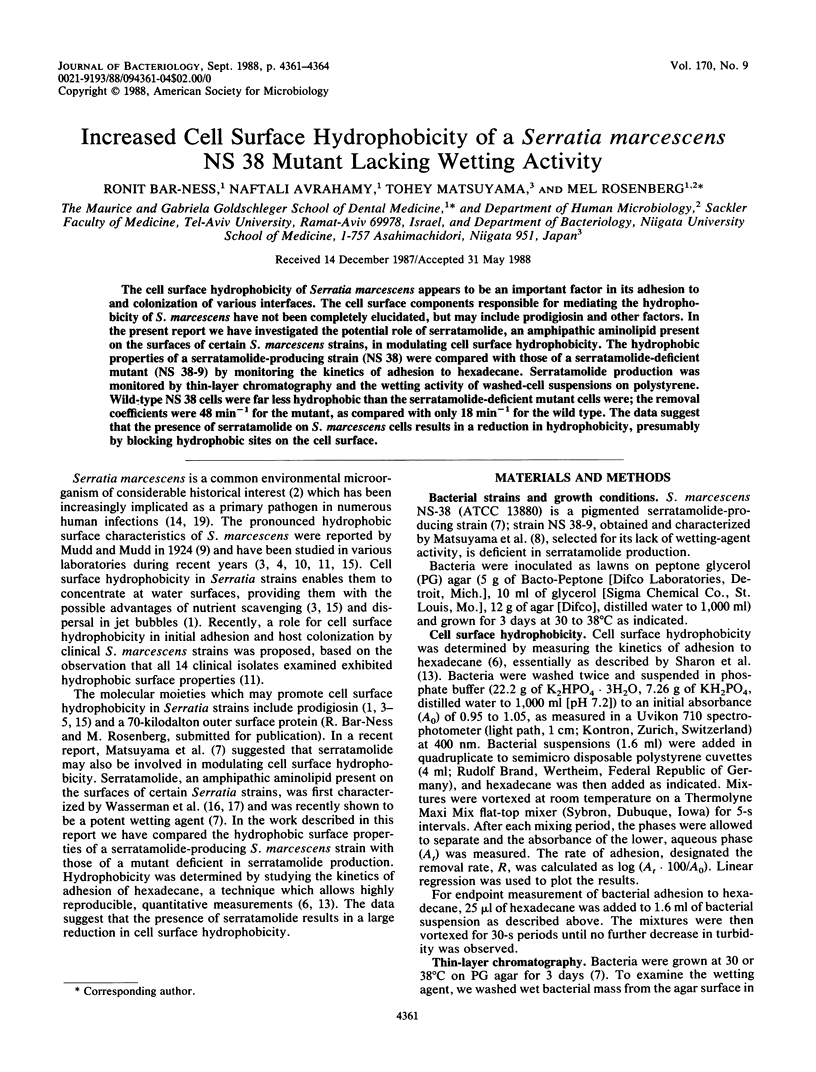
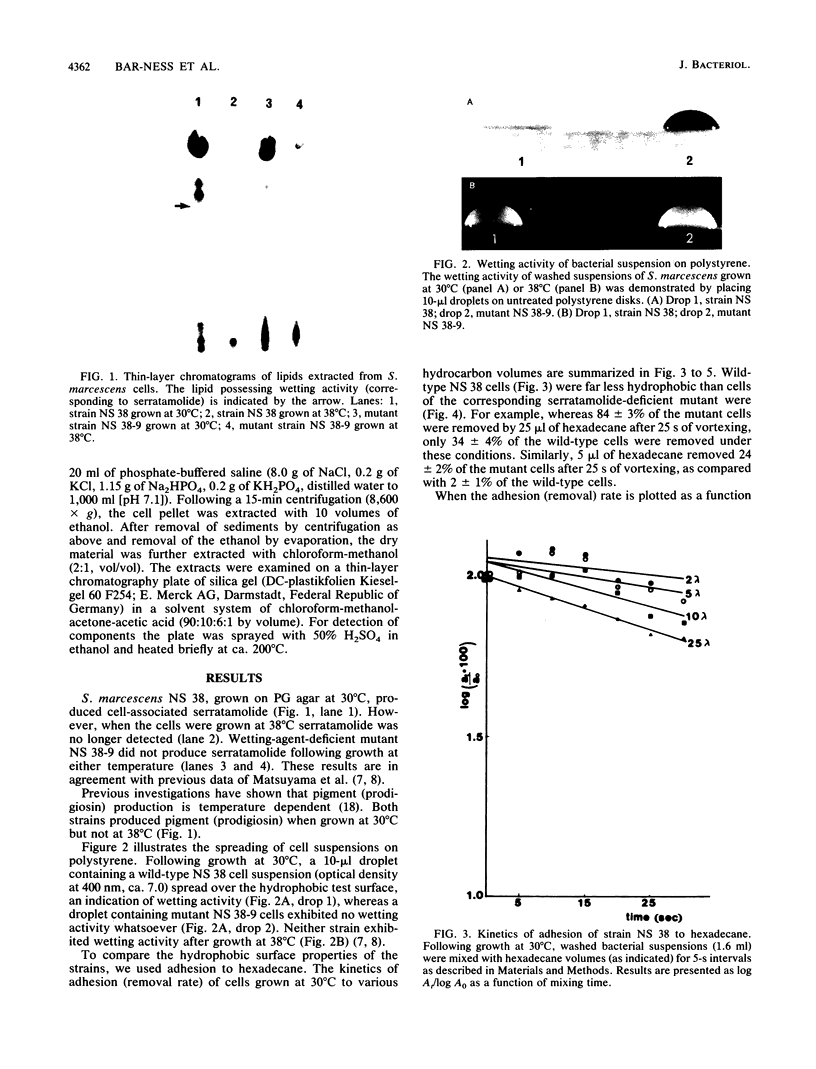
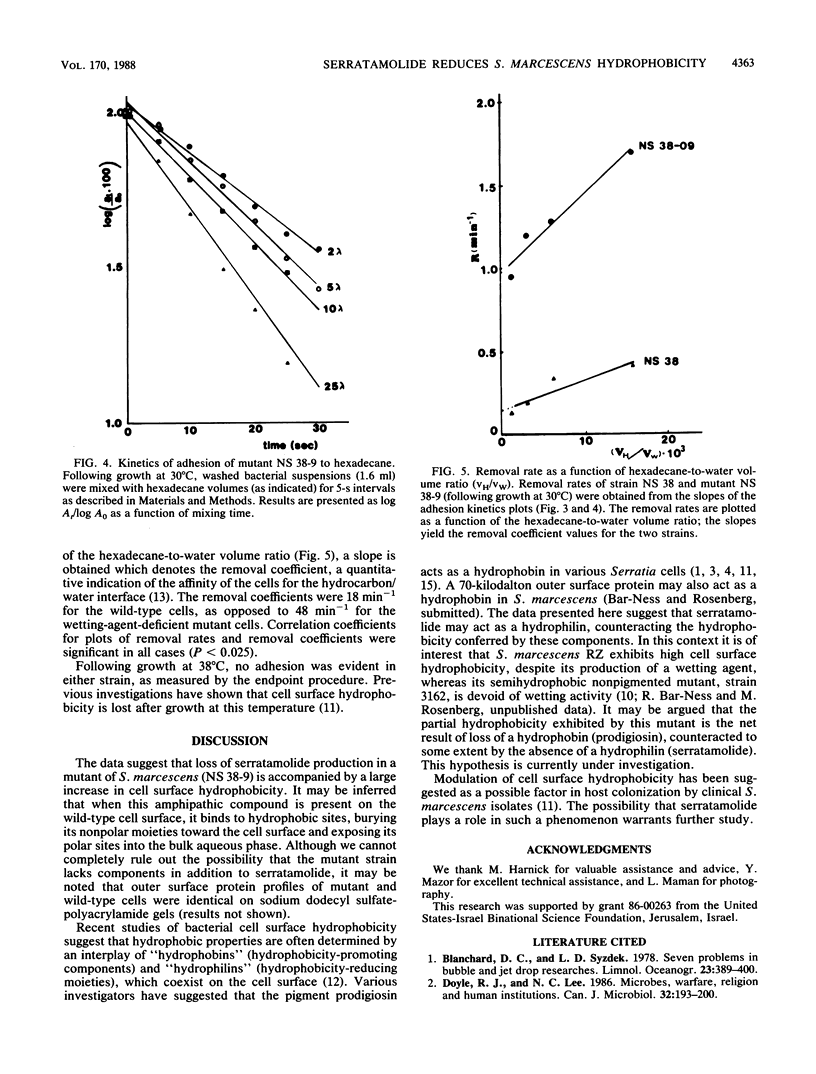
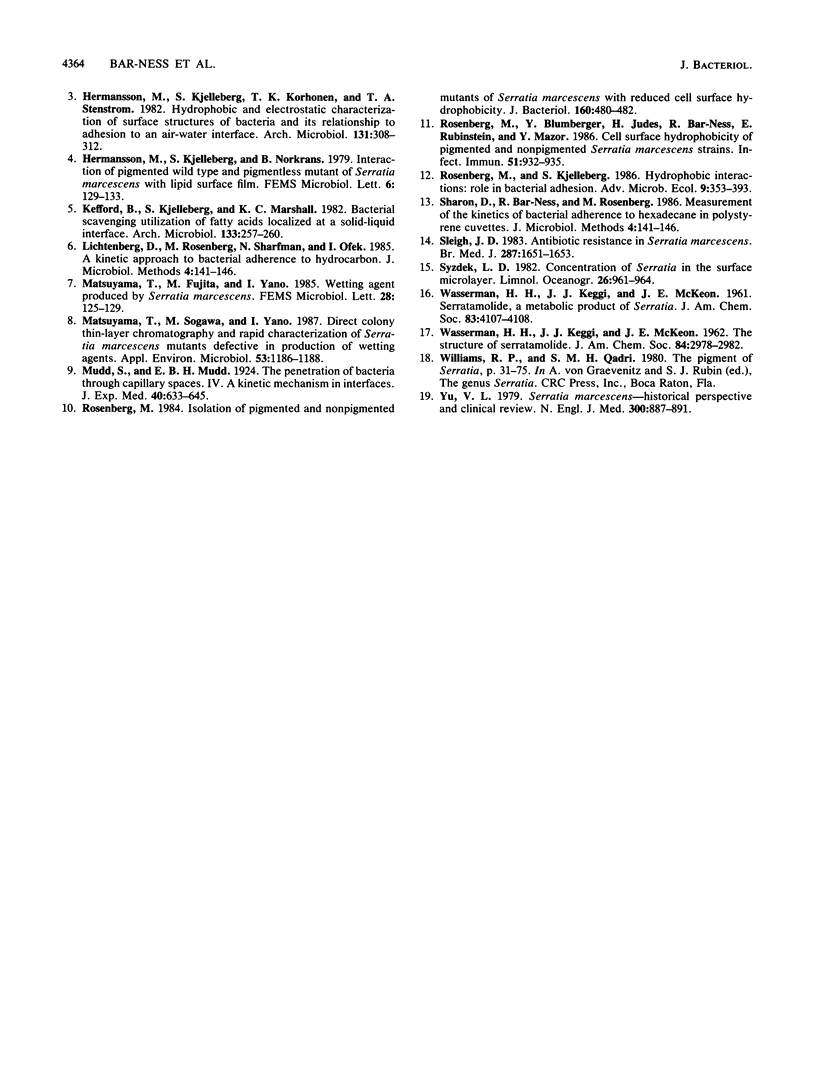
Images in this article
Selected References
These references are in PubMed. This may not be the complete list of references from this article.
- Doyle R. J., Lee N. C. Microbes, warfare, religion, and human institutions. Can J Microbiol. 1986 Mar;32(3):193–200. doi: 10.1139/m86-040. [DOI] [PubMed] [Google Scholar]
- Matsuyama T., Sogawa M., Yano I. Direct Colony Thin-Layer Chromatography and Rapid Characterization of Serratia marcescens Mutants Defective in Production of Wetting Agents. Appl Environ Microbiol. 1987 May;53(5):1186–1188. doi: 10.1128/aem.53.5.1186-1188.1987. [DOI] [PMC free article] [PubMed] [Google Scholar]
- Rosenberg M., Blumberger Y., Judes H., Bar-Ness R., Rubinstein E., Mazor Y. Cell surface hydrophobicity of pigmented and nonpigmented clinical Serratia marcescens strains. Infect Immun. 1986 Mar;51(3):932–935. doi: 10.1128/iai.51.3.932-935.1986. [DOI] [PMC free article] [PubMed] [Google Scholar]
- Rosenberg M. Isolation of pigmented and nonpigmented mutants of Serratia marcescens with reduced cell surface hydrophobicity. J Bacteriol. 1984 Oct;160(1):480–482. doi: 10.1128/jb.160.1.480-482.1984. [DOI] [PMC free article] [PubMed] [Google Scholar]
- Sleigh J. D. Antibiotic resistance in Serratia marcescens. Br Med J (Clin Res Ed) 1983 Dec 3;287(6406):1651–1653. doi: 10.1136/bmj.287.6406.1651. [DOI] [PMC free article] [PubMed] [Google Scholar]
- Yu V. L. Serratia marcescens: historical perspective and clinical review. N Engl J Med. 1979 Apr 19;300(16):887–893. doi: 10.1056/NEJM197904193001604. [DOI] [PubMed] [Google Scholar]




